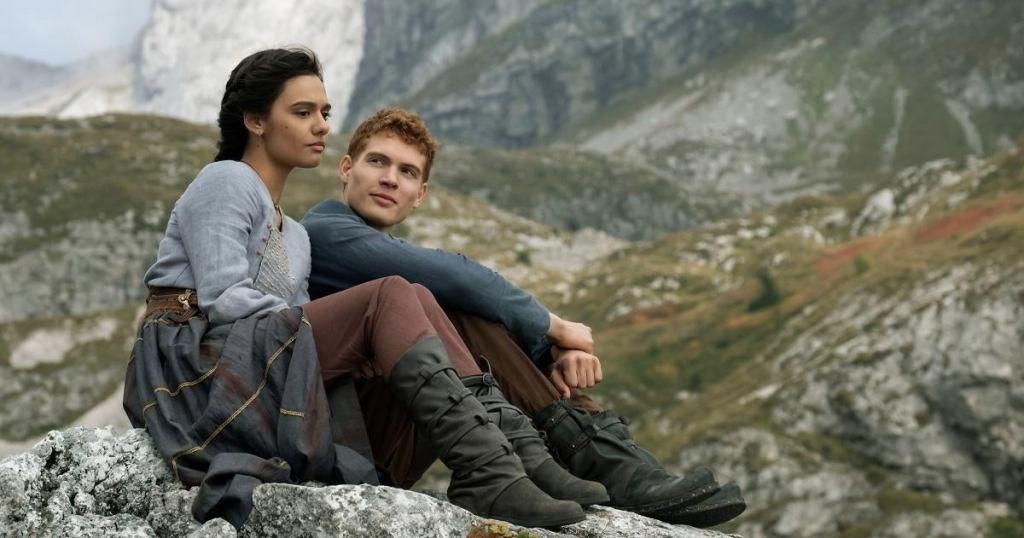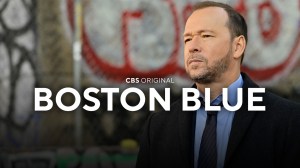If they haven’t done so already, epic fantasy adaptations are well on their way to rivaling comic book adaptations as a genre, but they have some unifying tropes to work out first. One of the biggest is the map — a staple of the genre on the page and, it turns out, just as essential on-screen. The biggest shows of the decade still haven’t agreed on how to show viewers these maps, however.
For simplicity’s sake if nothing else, many critics relate everything fantasy-related back to Game of Thrones. When it premiered in 2011, the show was lauded for hooking new or lapsed fans into the fantasy genre and presenting it in a brand new way. Starting around the time the show ended in 2019, a huge crop of new fantasy shows began to turn up – just this year we got Shadow and Bone, The Wheel of Time and two new entries into Netflix’s Witcher franchise. These all provide interesting solutions for the need for a map.
Videos by PopCulture.com
Game of Thrones‘ title sequence is legendary. It showed a stylized rendering of a map of Westeros and the relevant parts of Essos, often using sigils and symbolic images to highlight alliances or recent events. This put the map in front of audiences every single week and gave some sense of the scale of the world, the distances between locations and the geography in between.
So far, no show has taken this straightforward route yet, and it’s hard to imagine why. HBO doesn’t have ownership of maps, but right now it does still seem to be the biggest player in the genre — at least as far as mainstream fans and critics are concerned. In fact, YouTube Daniel Greene speculated that the reason Amazon’s Wheel of Time series didn’t include a map in its opening credits was to avoid (more) comparisons to Game of Thrones. Greene himself said he believes a map is “really needed” for “a show like this.”
At the same time, many streamers don’t want to have a lengthy title sequence, and they expect viewers to skip the titles especially when binge-watching a show. This is especially true on Netflix, where whole seasons are typically dropped all at once. Shadow and Bone cut right to the chase with its title sequence, but it compensated with an interactive map shared on social media that was a huge hit with fans. A similar map was released for The Witcher only after a timeline was out, (though admittedly the timeline was an understandable priority for The Witcher.)
This strategy is great, but limited. Unless producers were to direct fans to it at some point in the show, there’s no guarantee that they would find it. It counts on fans’ active engagement on social media to lead them to the map, which is exciting for those who take part but could be alienating to those who don’t. In the quest to make something obscure palatable to the masses, this might ultimately be counted as a step backward. Again, think of the MCU’s extreme revisions of Marvel Comics canon over the last decade and a half.
Another problem with an online map is the threat of spoilers. Shadow and Bone and The Witcher both included timeline guides to their interactive maps – a fun feature and useful for new fans, but dangerous for those who don’t pick it up right when the show premieres. Fans differ on how much background they want on their new fantasy world ahead of time, so this could turn some off. At the very least, it is likely to bombard viewers with information that isn’t relevant to the episode they’re watching in that moment. Adding spoiler warnings or completion metrics isn’t a perfect solution to this either, because it still makes the overall experience more complicated.
Finally, Amazon Prime is testing a promising new strategy by including an interactive map for The Wheel of Time right in its streaming app, so it’s accessible on TV devices, consoles, web browsers or mobile devices. This is nice especially for a streaming exclusive, since it can be pulled up between episodes during a binge or viewed beforehand as a primer. However, new fans may need some prompting to seek this resource out depending on how it’s presented.
This leaves fans with a few imperfect map methods to choose from, and only untested proposals beyond that. Maps could be shown in the end credits, some fans have suggested, or conspicuously shown on-screen mid-episode when relevant, others say. Any of these methods might work, as would dozens of other variations.
The real question is whether showrunners, studios and streamers have fully grasped how vital maps are to their stories, and to the genre they’re drawing their content from. Ideally, they’d understand – just as book publishers do – that it’s okay to share a feature like this in common with shows from other outlets because it lets fans know that they are part of the same storytelling tradition.









